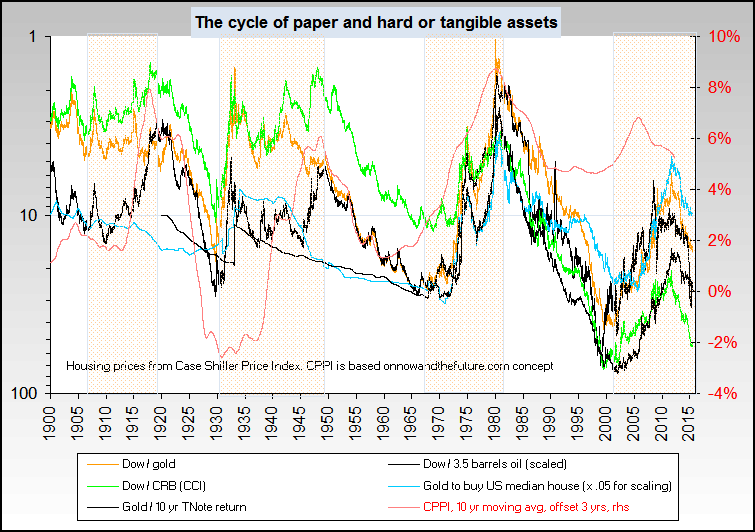Re: Deflationistas, inflationistas, and hyperinflationistas - Eric Janszen
Although I'm in the iTulip camp with regard to Ka-Poom, there is another argument for hyperinflation that wasn't mentioned in the OP:
Rather than being completely driven by the creation of new money and credit, another scenario starts with overseas investors losing faith in the dollar. As a result, they look for a good way to exchange their dollar holdings for other assets. The largest supply of dollar-denominated assets is in the US, so the dollars come flooding home. When they arrive, asset prices are driven up, and the value of the dollar declines. At some point, the process becomes self-reinforcing: rising asset prices and a declining dollar encourages the selling of dollars and the purchase of assets; the velocity of money will increase.
What's different about this scenario is that the tools the Fed has available to it will do relatively little to slow it down, because it's not credit-driven.
Although I'm in the iTulip camp with regard to Ka-Poom, there is another argument for hyperinflation that wasn't mentioned in the OP:
Rather than being completely driven by the creation of new money and credit, another scenario starts with overseas investors losing faith in the dollar. As a result, they look for a good way to exchange their dollar holdings for other assets. The largest supply of dollar-denominated assets is in the US, so the dollars come flooding home. When they arrive, asset prices are driven up, and the value of the dollar declines. At some point, the process becomes self-reinforcing: rising asset prices and a declining dollar encourages the selling of dollars and the purchase of assets; the velocity of money will increase.
What's different about this scenario is that the tools the Fed has available to it will do relatively little to slow it down, because it's not credit-driven.


Comment